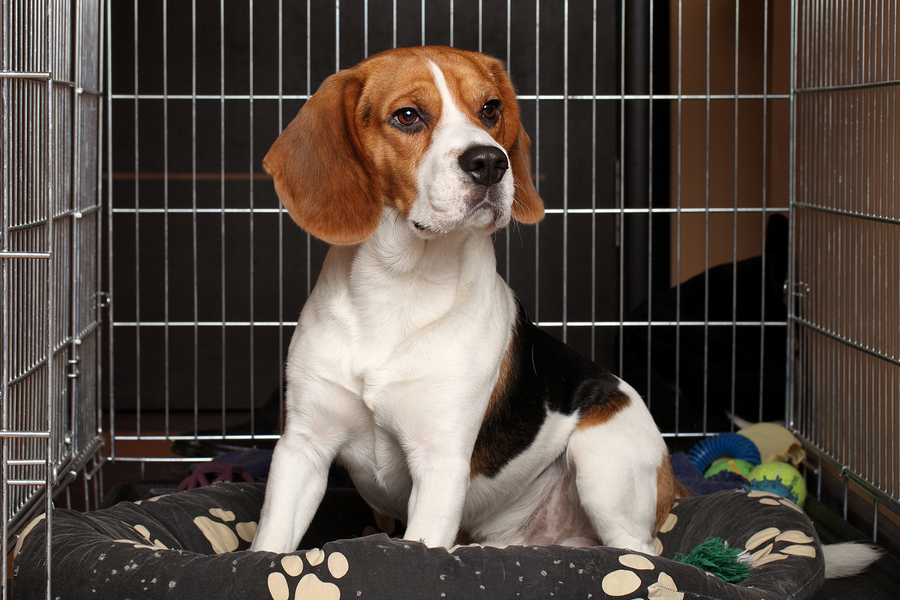The destruction was everywhere. Shredded furniture. Bent window blinds. Gnawed baseboards. Scattered throughout the house were shreds of random papers, from magazines to bills. The area rugs reeked of urine. As I took all this in, the distraught woman pointed at her leather couch, which featured a giant, ragged hole in the once-plump cushion.
“He did that!” she exclaimed, then pointing to her smiling Doberman. He didn’t look remorseful in the least. Zeus was just over a year old and a four-legged tornado.
“Have you considered crate training him?” I asked.
“Oh, I couldn’t,” the woman gasped. “I think those cages are cruel.”
I get it. I really do. Putting your dog in a crate can seem mean. But would you leave a human toddler alone in your house when you left? Would you ever leave a toddler unsupervised at all? Of course not. It’s a recipe for disaster. The same goes for your puppy and teenage dog.
My goal is always to have a dog loose in the house. Dogs must earn that privilege, however. They’re not born knowing how to behave in your home. You need to teach them. Using a crate can help with housetraining, and it can help keep your dog safe. As expensive and annoying as it is, you can replace a leather couch. You can’t replace your dog if he eats something that hurts him.
The Sooner, the Better
It’s easier to teach your puppy confinement training at a young age when you first bring him home. Start crate training right away. Teach him what he’s allowed to put his teeth on and where to eliminate. The sooner you start, the sooner he graduates out of the crate.
Simply put the puppy in his crate and give him a treat. He should have toys in his crate. Feed all meals in the crate, with the crate door shut. This will help build the crate as a happy place. Very young puppies between 8 and 10 weeks should be taken out every two hours to eliminate. Your puppy will need lots of attention and exercise outside the crate as well. Use the crate when you can’t supervise him closely to ensure he doesn’t make mistakes. Until he is housetrained and not destructive, he should also sleep in his crate. It’s okay if you want the crate in your bedroom. He’ll likely feel more secure there.
Catching Up
What if your dog is older and you want to start crate training? You’ll need to go more slowly.
Start by tossing a treat into the crate. When your dog enters the crate and is completely inside it, click or use your marker word (such as “Yes!”) right before he eats the treat. Give him additional treats while he’s in the crate. Then use a release word, such as “Okay,” to indicate he can exit the crate. Repeat several times until your dog is trotting inside the crate to get his treat.
The next step is to simply point inside the crate, without tossing a treat in first. Give your dog a minute to think about this. When he goes in the crate, click and treat and give lots of praise. Repeat until your dog reliably goes into the crate at your hand signal.
When he is comfortable with this step, use your hand signal and when he enters the crate, shut the door. Click and feed the treat through the crate door. Give him several treats in a row. Then say “Okay” and open the crate door for him to exit. Gradually increase the time he stays in the crate before you release him.
In between training sessions, feed all his meals inside the crate. Make sure you keep toys in there for him. Every time he goes in on his own, praise him.
A crate is a valuable tool that can help you manage your dog while you train him. As he learns how to behave in your home, you can start giving him a little freedom for increasingly longer periods of time. When this is done correctly, your dog can enjoy being loose in your home unsupervised without you worrying about a disaster awaiting you when you return.
This article was reviewed/edited by board-certified veterinary behaviorist Dr. Kenneth Martin and/or veterinary technician specialist in behavior Debbie Martin, LVT.








